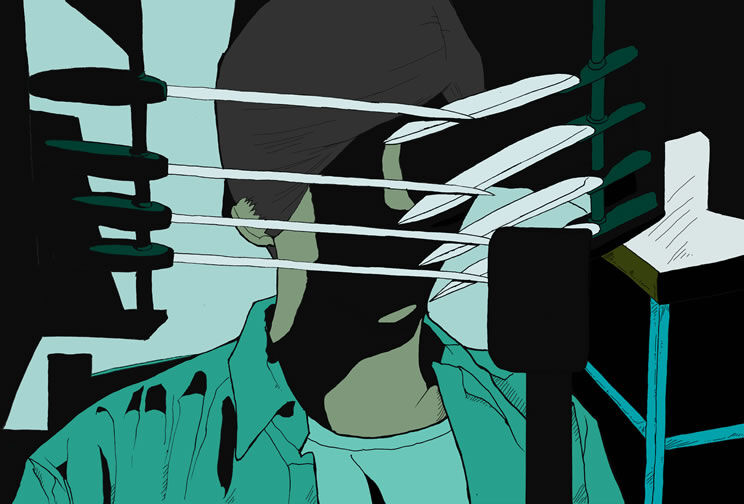Is There a Real Jigsaw Killer (Like Saw)
The Saw Movie Franchise: Is It Based Upon A Real Story?
The Saw horror franchise is notorious for its sick and twisted death scenes (even being produced by a company called “Twisted Pictures”). The Saw franchise takes advantage of a very real fear in all of us: sadistic torture and body horror. Given torture is a fairly realistic fear, free of supernatural elements, it is more logical that there could be a real life killer like John Kramer (Jigsaw from the movie). After all, many of the traps (or similar mockeries) could be devised from simple components and parts available online and from hardware stores.
Is There Any Real Life Killer Like John Kramer (aka Jigsaw) From Saw?
Who could possibly come up with such sadistic torture strategies like those employed by Jigsaw, if they weren’t basing it off of some type of real life event? Twisted Pictures. Twisted Pictures is responsible, along with James Wan and other directors and writers, for coming up with the deranged story line that is the Saw franchise. That said, there is one really strong media push to WANT a jigsaw killer, probably due to the movies themselves. In 2009, Jeffrey Howe was murdered by Stephen Marshall and Sarah Bush. Howe was dismembered completely and the body parts were found scattered throughout multiple places. Because the many body parts turning up, the media referred to Howe as the “Jigsaw Man,” and later referred to Marshall as the “Jigsaw Killer.” Truly, Howe was Marshall’s only victim, and Marshall was no where near as smart as John Kramer. In fact, Marshall was a body builder who killed Howe, his friend, in order to steal his food and housing benefits…hardly an intelligent move!
Ultimately, there is no real life Jigsaw killer, however, there are still several notable murders and deaths which ACTUALLY DO resemble Saw-like devices. And it is most certainly reasonable to assume a fair amount of murderers and conspiring-to-be murderers would draw inspiration from Jigsaw, Saw and the traps from the movies.

Notable Murders, Deaths & Plots That Resemble Saw Movie Deaths
Real Death Like Saw #1: The Death of Brian Douglas Wells
A device was attached to Brian Wells’ chest and he was ordered to rob a bank. The device armed and exploded, leaving a huge baseball-sized hole in his chest, instantly killing him.
Real Death Like Saw #2: The Death of Richard Hamilton
In 2013, a murderer was spawned who copied a scene out of a Saw film directly by slicing through his victim, Richard Hamilton’s spine until he revealed his ATM card’s PIN number. The murderer was Matthew Tinling, who owned a copy of the very Saw with the torture scene itself. Turns out he only wanted £240, specifically to spend the money on crack cocaine.
Real Death Like Saw #3: A Triad Murder
Although the murder occurred before the time of Saw, the famous Hello Kitty Murder in Hong Kong (1999) left the world shocked in a similar sense of sadistic. A woman was murdered, decapitated, and her head stuffed into a Hello Kitty doll as an intimidation tactic.
Real Death Like Saw #4: Canadian Serial Killer Cody Legebokoff
Cody was a fairly young serial killer and decided to murder those he felt sorry for, similar to John Kramer’s reasoning for trapping and murdering his victims in the Saw franchise.
[Close Call] Saw Inspired Plot #5: Recreating the Movie
Two teenage boys (15 and 14 years old) were turned in by one of their mothers after she heard them discussing a plot to recreate the saw movies by kidnapping a police officer and 2 girls around their age, who they believed deserved the saw treatment. They had even begun collecting their necessary supplies, including camcorders for documenting their recreation.
[Close Call] Saw Inspired Plot #6: Saw-Like Phone Calls
Two 13 year old girls from Tennessee got into a little trouble after harassing an older woman with a Jigsaw-like voice, leaving messages that insinuated a game had begun in her home. The voice messages exclaimed her friend was trapped, hidden in fact, in her home and that she needed to risk dying of toxic gas poison while trying to find her friend, or immediately save herself by escaping the home. The poor woman instead had a stroke and was rushed to the hospital!
Final Notes About a “Real Jigsaw Killer”
Although many people are inspired by movies, and there may most certainly have been some notable murders that could have been inspired by Saw’s fictional killer Jigsaw…there is no real Jigsaw killer. The Saw franchise, no matter how creative, is not based upon a true story.
Still, James Wan, Twisted Pictures and everyone else involved in the production of the Saw movies, deserve a standing ovation for their originality within a wildly-saturated industry that is the horror genre.


Tritone’s love of horror and mystery began at a young age. Growing up in the 80’s he got to see some of the greatest horror movies play out in the best of venues, the drive-in theater. That’s when his obsession with the genre really began—but it wasn’t just the movies, it was the games, the books, the comics, and the lore behind it all that really ignited his obsession. Tritone is a published author and continues to write and write about horror whenever possible.
